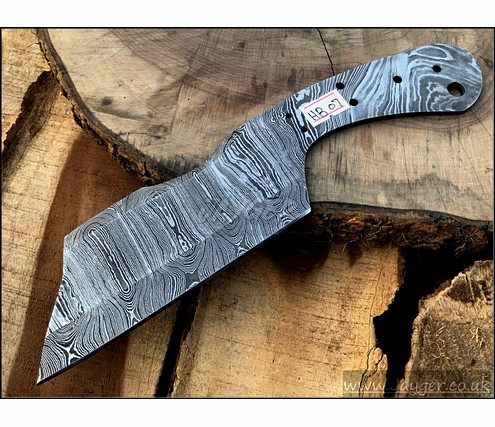If you’re new to knife making, choosing the steel for your knife blank can be overwhelming. Many different types of steel are available, each with its unique characteristics. This guide will help you understand the most common types of steel used in knife making and which one may be best for your project.
Introduction to Knife Blank Steel Types.
Knife-making is an art that requires skill, patience, and suitable materials. So, of course, one of the most important materials you’ll need is steel. Steel is the backbone of any knife, and choosing the right type of steel can make all the difference in the quality and performance of your knife. In this guide, we’ll introduce you to the most common types of steel used in knife making and help you choose the best one for your project.
Carbon Steel: High Carbon vs. Low Carbon.
Carbon steel is a popular choice for knife-making due to its durability and ability to hold a sharp edge. High-carbon steel contains a higher percentage of carbon, typically between 0.6% and 1.0%, which makes it harder and more durable. However, it is also more brittle and more difficult to work with. Conversely, low-carbon steel contains less than 0.3% carbon and is softer and more malleable. As a result, it is easier to work with but may not hold an edge, as well as high-carbon steel. Ultimately, the choice between high and low-carbon steel depends on the knife’s intended use and the maker’s preferences.
Stainless Steel: Martensitic vs. Austenitic.
Stainless steel is another popular choice for knife-making due to its resistance to corrosion and rust. Martensitic stainless steel is more complicated and durable but can be more challenging due to its higher carbon content. On the other hand, Austenitic stainless steel is softer and more malleable, making it easier to work with but less durable than martensitic stainless steel. The choice between these two types of stainless steel depends on the knife’s intended use and the maker’s preferences.
Damascus Steel: The Art of Layering.
Damascus Steel is known for its unique and beautiful patterns created by layering different types of steel together. This process involves folding and welding the steel multiple times to create a layered effect. The result is a blade that is visually stunning but also strong and durable. Damascus steel is often used in high-end knives and is a popular choice among knife collectors. However, it can be more expensive and challenging to work with than other steel types.
Choosing the Right Steel for Your Knife Blank.
Choosing the correct steel for your knife blank is crucial for knife making. Many different types of steel are available, each with its unique characteristics and properties. Some of the most common types of steel used in knife making include stainless steel, high carbon steel, and Damascus steel. It’s essential to consider factors such as durability, corrosion resistance, and ease of sharpening when selecting the correct steel for your knife blank.

